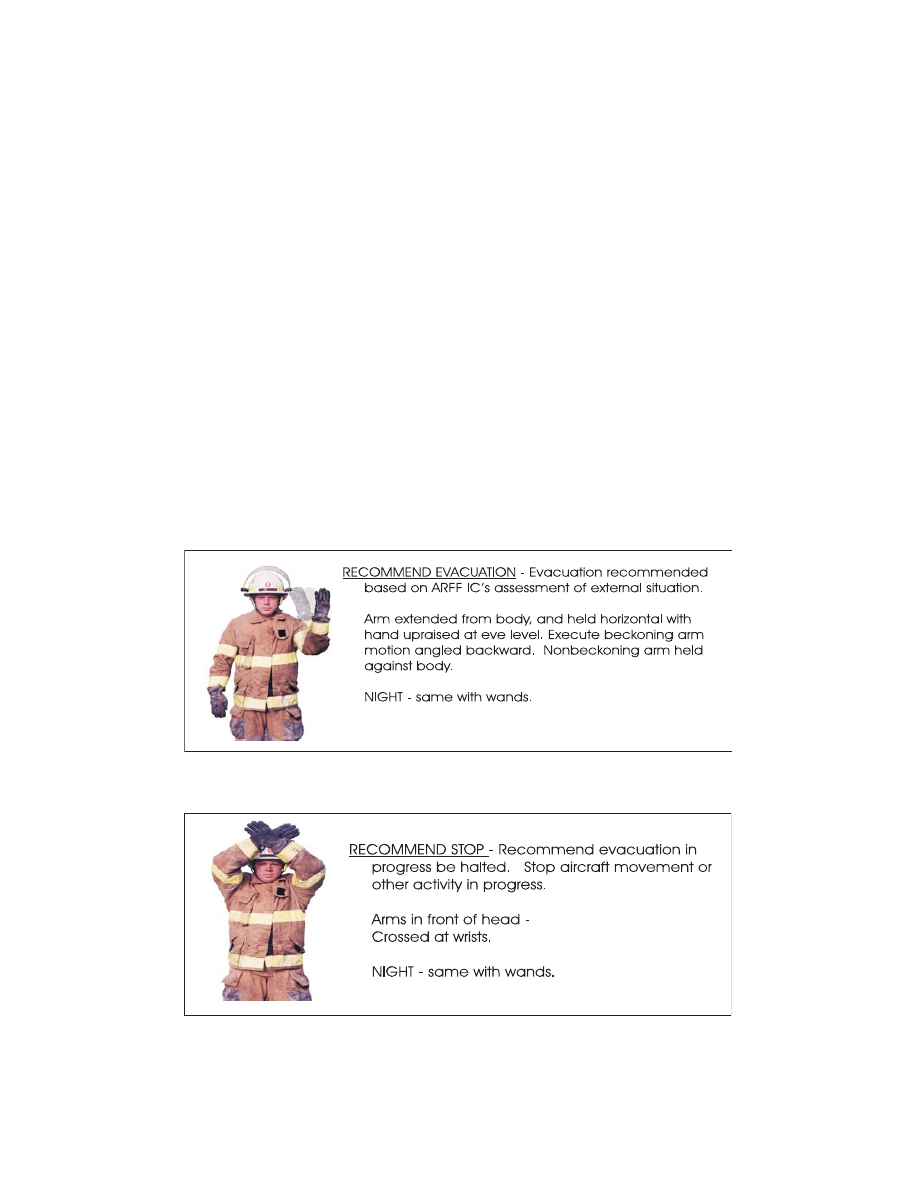
AIM
7/26/12
6
−
5
−
1
Aircraft Rescue and Fire Fighting Communications
Section 5. Aircraft Rescue and
Fire Fighting Communications
6
−
5
−
1. Discrete Emergency Frequency
a.
Direct contact between an emergency aircraft
flight crew, Aircraft Rescue and Fire Fighting
Incident Commander (ARFF IC), and the Airport
Traffic Control Tower (ATCT), is possible on an
aeronautical radio frequency (Discrete Emergency
Frequency [DEF]), designated by Air Traffic
Control (ATC) from the operational frequencies
assigned to that facility.
b.
Emergency aircraft at airports without an
ATCT, (or when the ATCT is closed), may contact the
ARFF IC (if ARFF service is provided), on the
Common Traffic Advisory Frequency
(CTAF)
published for the airport or the civil emergency
frequency
121.5 MHz.
6
−
5
−
2. Radio Call Signs
Preferred radio call sign for the ARFF IC is
“(location/facility)
Command
” when communica-
ting with the flight crew and the FAA ATCT.
EXAMPLE
−
LAX Command.
Washington Command.
6
−
5
−
3. ARFF Emergency Hand Signals
In the event that electronic communications cannot
be maintained between the ARFF IC and the flight
crew, standard emergency hand signals as depicted in
FIG 6
−
5
−
1 through FIG 6
−
5
−
3
should be used. These
hand signals should be known and understood by all
cockpit and cabin aircrew, and all ARFF firefighters.
FIG 6
−
5
−
1
Recommend Evacuation
FIG 6
−
5
−
2
Recommend Stop